SUMMARY
VENOM: Very mild - no known danger
PREVALENCE: Common
ACTIVE PERIOD: Active during the day
KEY ID FEATURES: Long slender body, highly patterned with red bands separated by white and black. Organge bands on the head with brown flanks and cream colored just above the ventrals.
BEHAVIOR: Largely arboreal, will leap from branches in order to escape attack.
SIZE: Small - >1m
OTHER: Rear fanged and technically venomous but not known to be dangerous to humans
QUICK ASSESSMENT 0-10
GALLERY
IMPORTANT: Many snakes have significant variance in coloration and pattern even within the same species. There can also be extreme differences in appearance from juveniles to adults so it is important to never assume you have properly identified a snake.
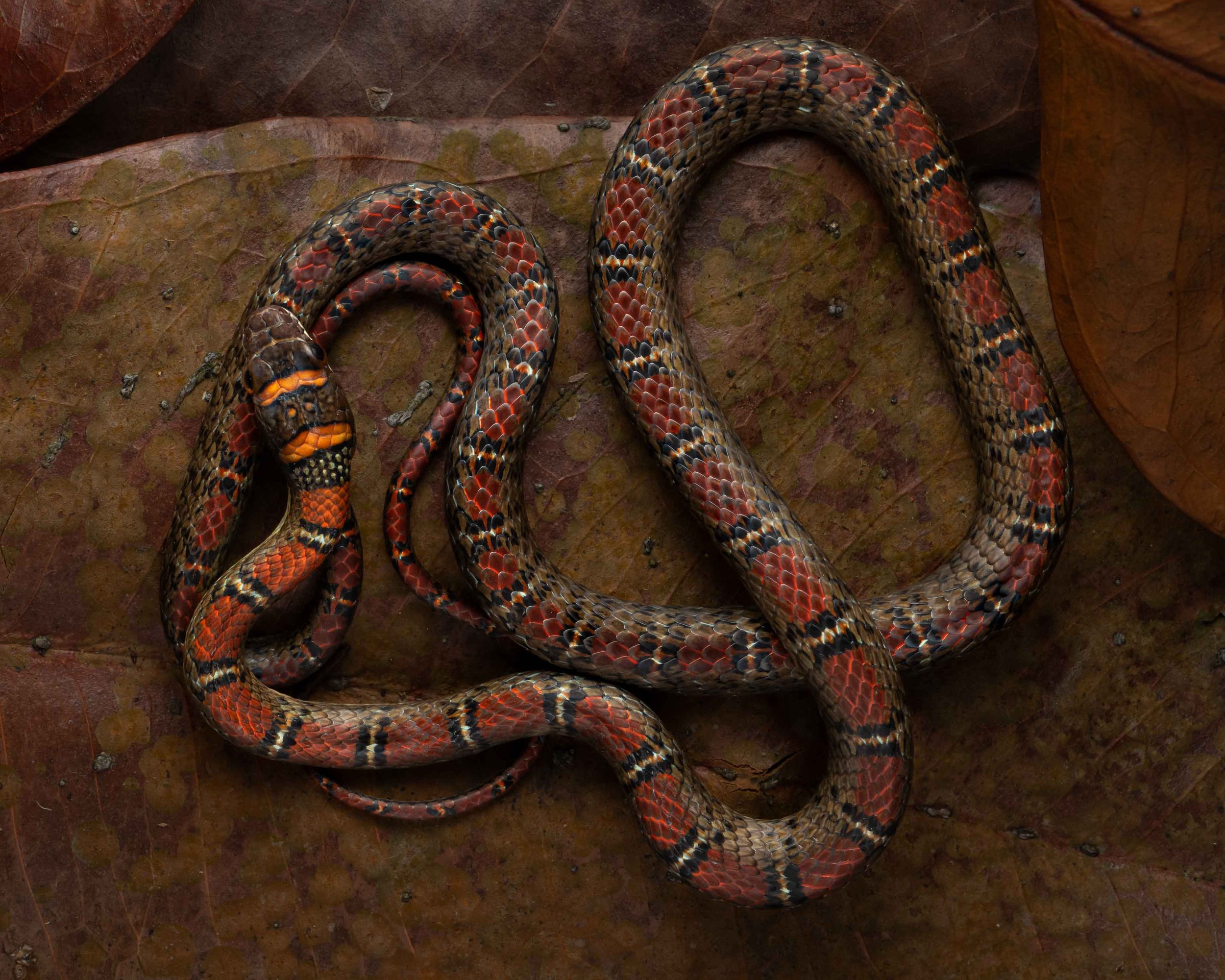
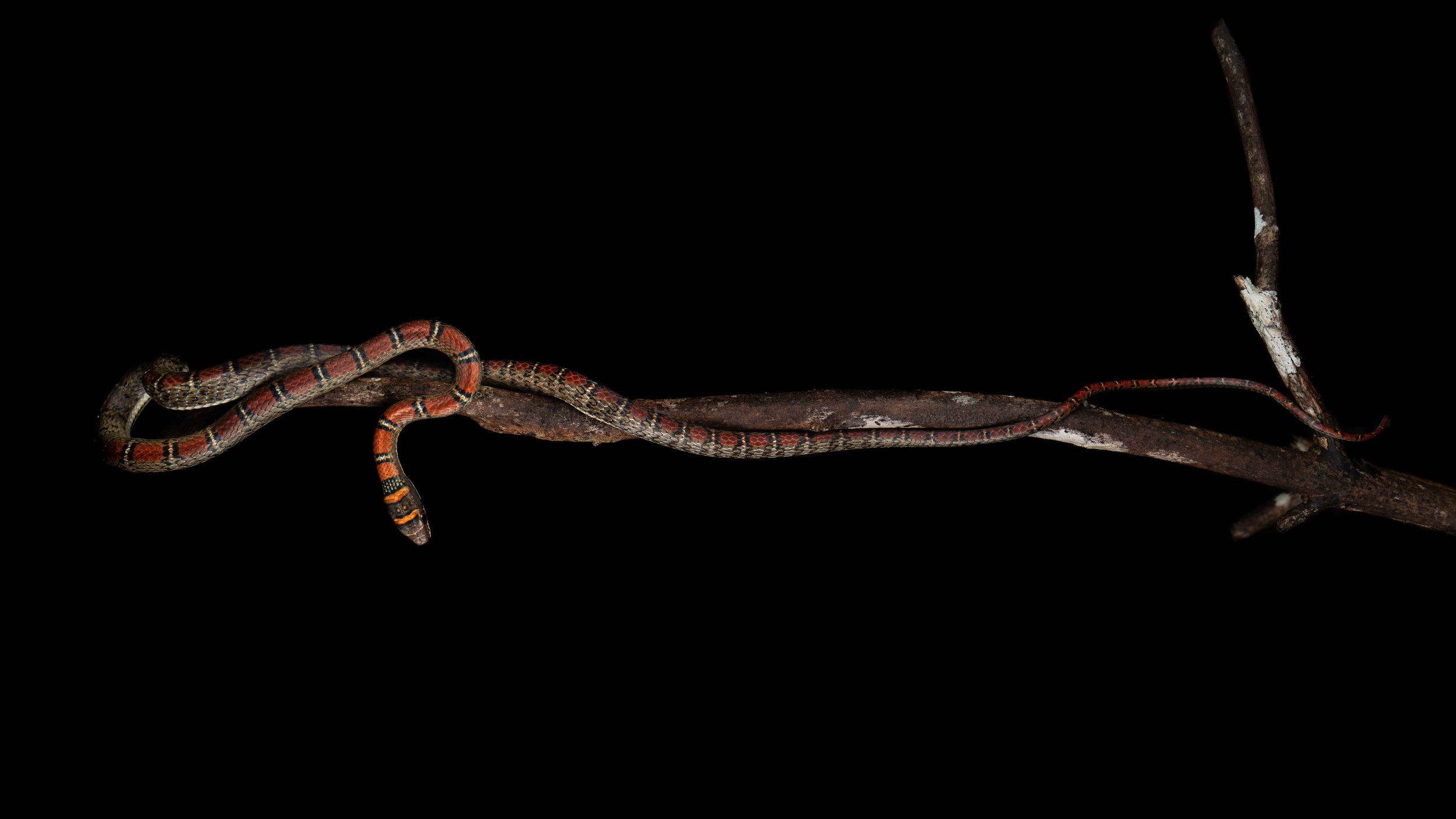
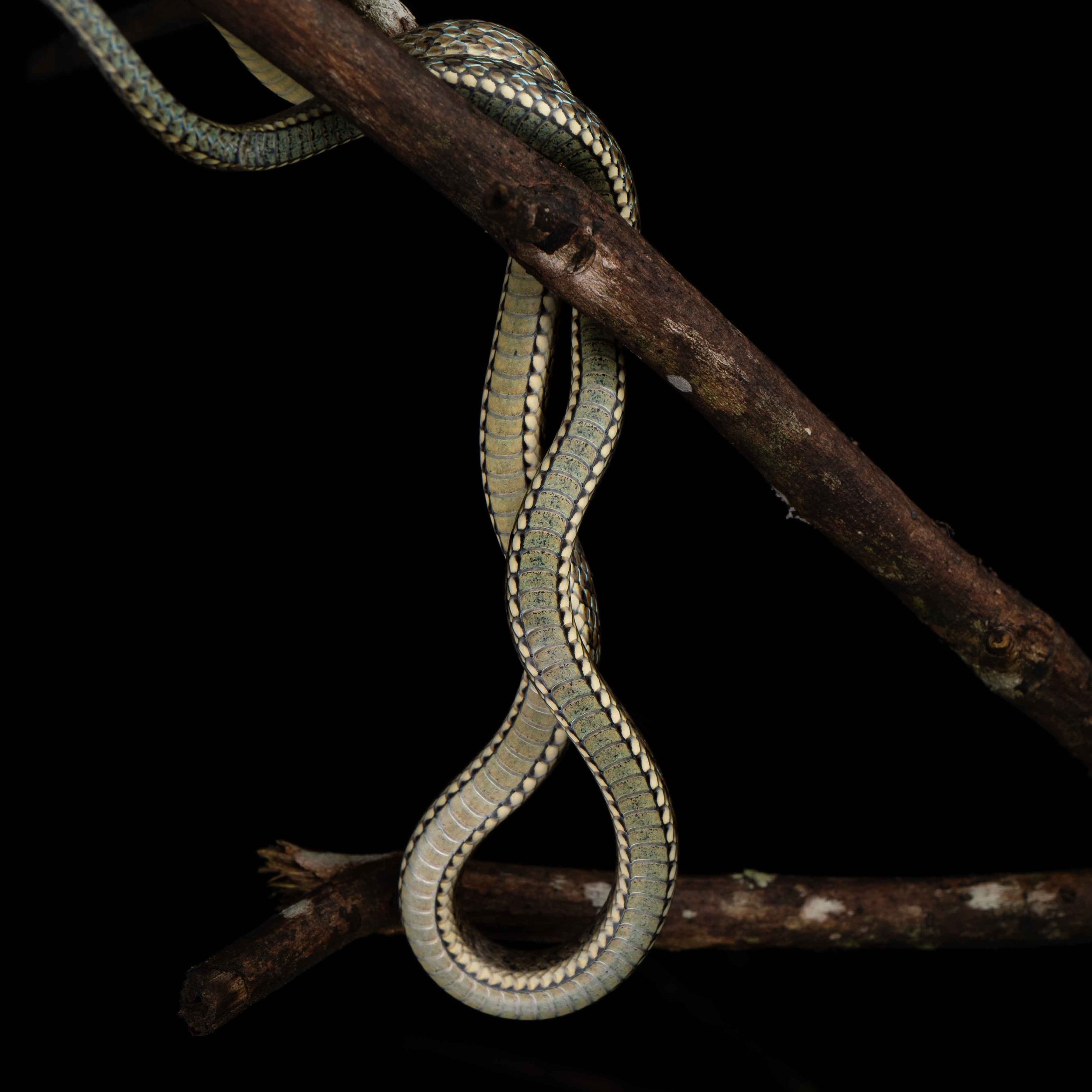
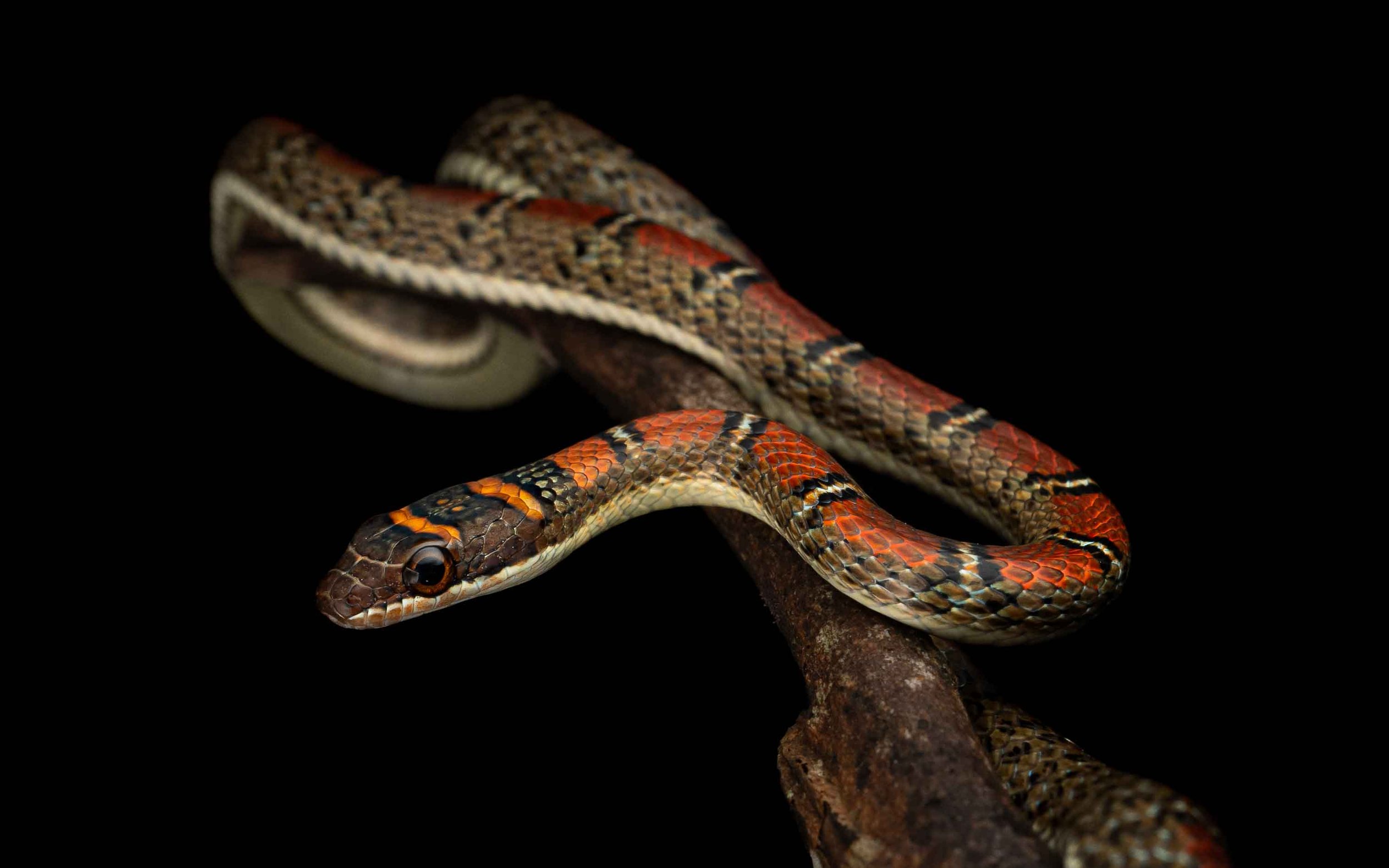
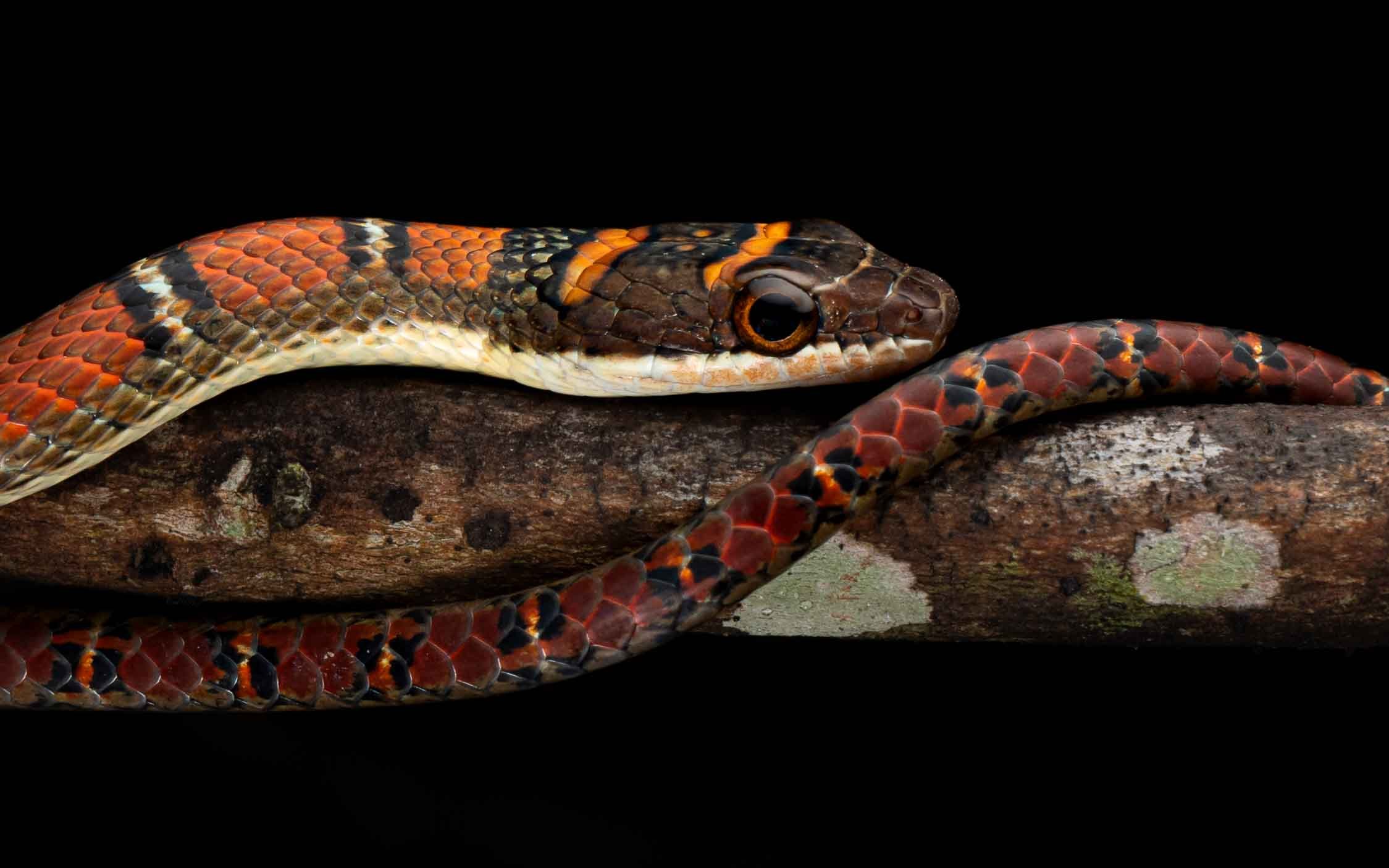
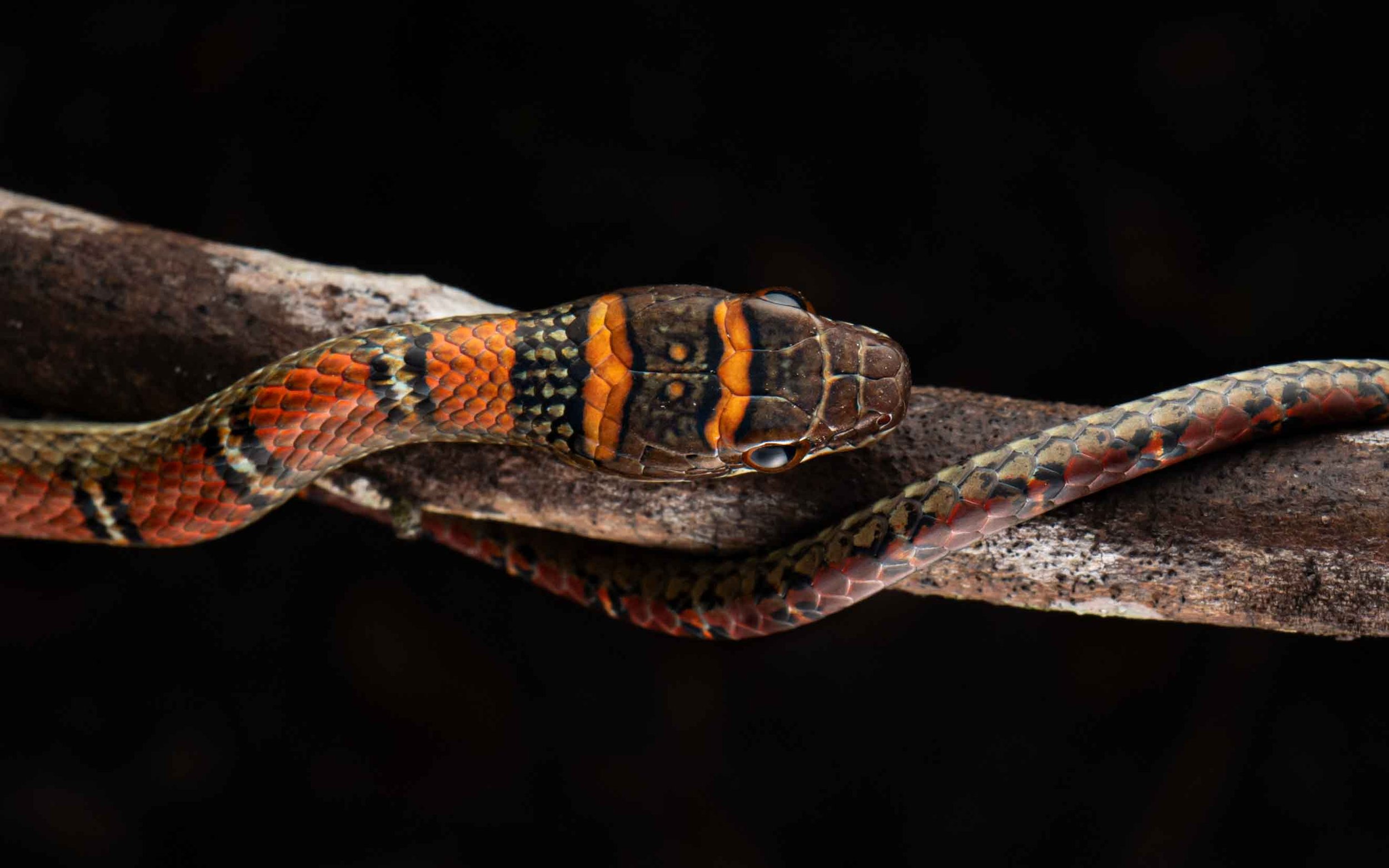

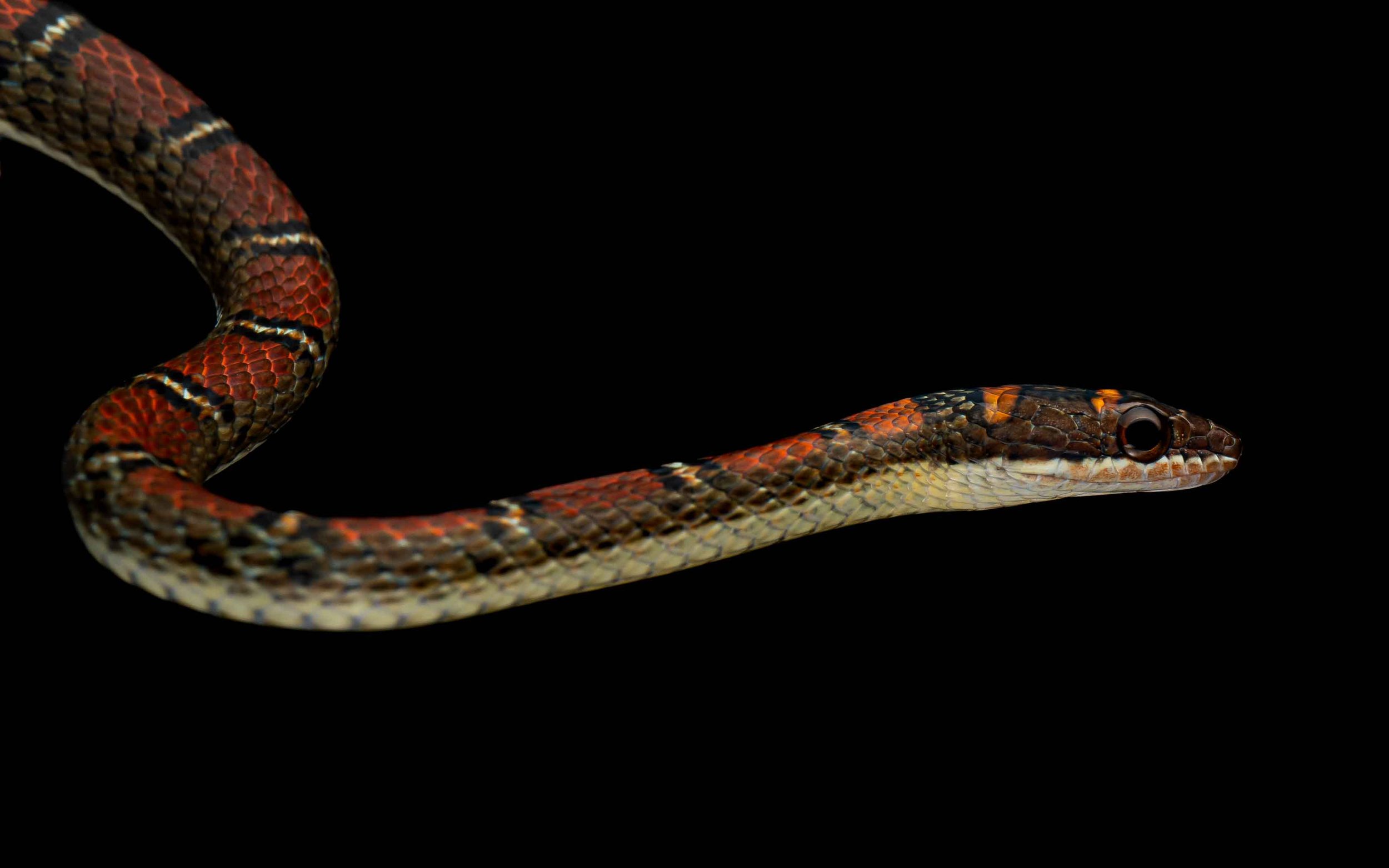
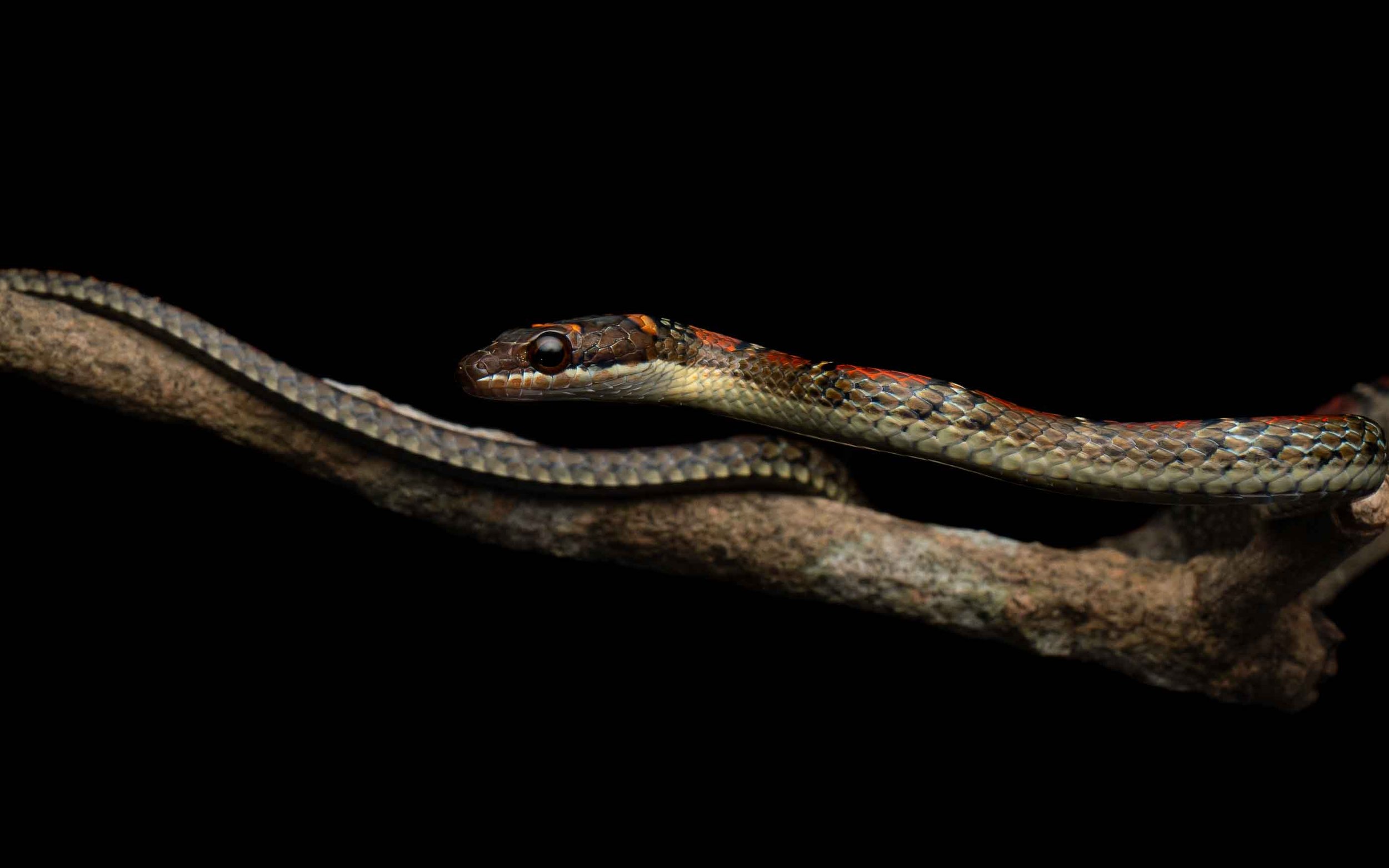
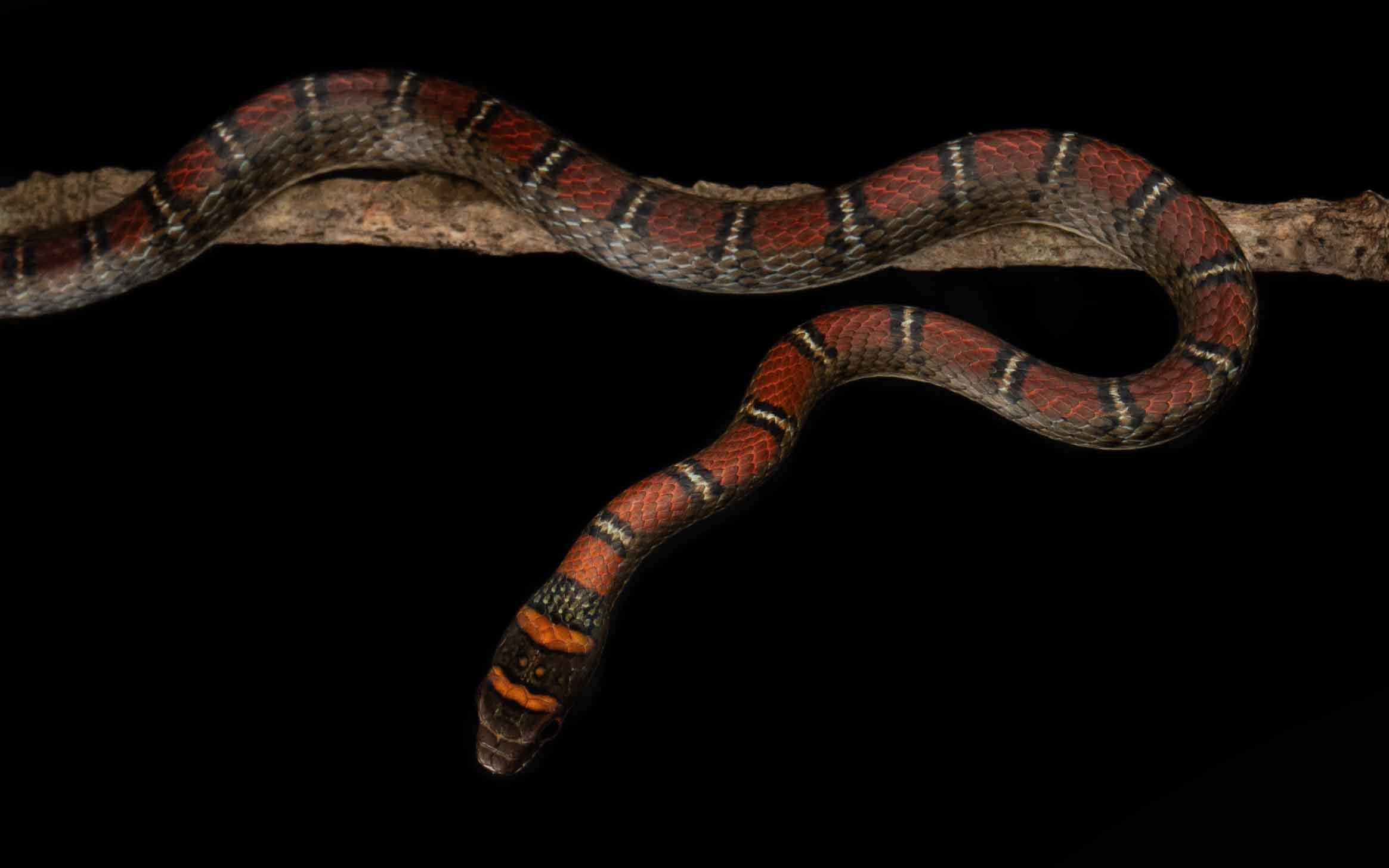
DESCRIPTION
The twin-barred tree snake aka banded flying snake is a member of the Chrysopelea genus, a group of animals known as ‘flying snakes’. This particular species is beautifully patterned with red blotches running the length of the back, spearated with black and white bands. The flanks are brown with a cream color transition to the ventrals. The head is also brown with bright orange bands. The ventrals are cream with black lines down teh sides for the first thrid transitioning to a slightly darker color towards the tail.
BEHAVIOR
Twin-barred tree snakes, as their name indicates, are largely arborial, spending most of their life in trees and cruising shrubs in search of prey. The most distinguishing behavior of these and other snakes of the same genus is their ability to leap off trees, flatten their bodies out and glide to adjacent trees in order to escape predation and pursue prey. The Twin-bar’s ability to flatten its body is less extreme than other members of hte genus, but they nevertheless demonstrate the same behavior. As with most snakes they can bite and musk defensively if handled or attacked, though neither is of much consequence to people given the dimunitive size of this species.
HABITAT
Due to their largely arboreal nature Twin-barred tree snakes are generally found in forested areas, often close to some water source. They have also been observed in more open areas like fern groves and public gardens.
MISTAKEN IDENTITY
NO SNAKE SHOULD EVER BE HANDLED BY ANYONE BUT EXPERTS: The twin-barred tree snake is a relatively uniquely patterned snake and is difficult to mistake with other species.

